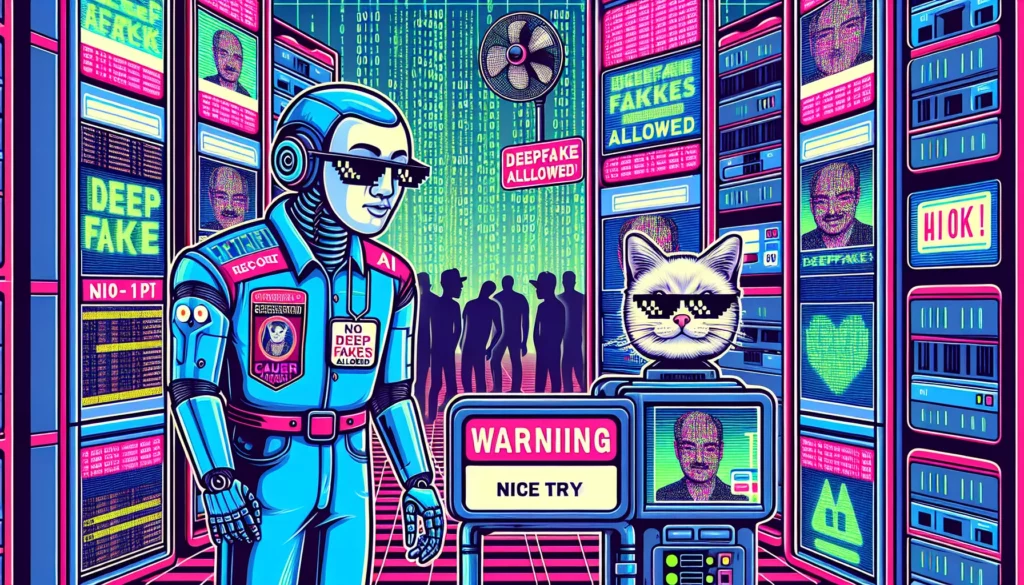Mitigating Deepfake Threats in the Era of Artificial Intelligence
The cybersecurity landscape has undergone significant transformation due to the emergence of generative AI technologies. Adversaries are increasingly employing large language models (LLMs) to impersonate trusted entities and automate social engineering tactics at an unprecedented scale.
This discussion focuses on the current threat scenarios posed by these AI-driven attacks, the underlying factors contributing to their rise, and effective prevention measures.
The Most Powerful Person on the Call Might Not Be Real
Recent intelligence reports reveal an alarming increase in the sophistication and occurrence of AI-driven attacks:
– Voice Phishing Surge: CrowdStrike’s 2025 Global Threat Report documented a 442% rise in voice phishing (vishing) attacks from the first half to the second half of 2024, attributed to AI-generated phishing and impersonation methods.
– Social Engineering Prevalence: As highlighted in Verizon’s 2025 Data Breach Investigations Report, social engineering remains a primary strategy in data breaches, with phishing and pretexting accounting for a substantial number of incidents.
– North Korean Deepfake Operations: North Korean operatives have been reported utilizing deepfake technology to create fabricated identities for online job interviews, aiming to gain employment positions in order to infiltrate organizations.
In this evolving environment, trust must be established through definitive, real-time verification rather than through mere assumption or detection.
Why the Problem Is Growing
Three converging trends are intensifying the prevalence of AI impersonation as a significant threat vector:
1. AI Makes Deception Cheap and Scalable: The availability of open-source voice and video tools enables threat actors to impersonate individuals using just a few minutes of reference material.
2. Virtual Collaboration Exposes Trust Gaps: Collaboration platforms such as Zoom, Microsoft Teams, and Slack operate under the assumption that participants are who they claim to be. This assumption presents opportunities for attackers to exploit.
3. Defenses Rely on Probability, Not Proof: Traditional deepfake detection techniques utilize facial markers and analytical algorithms to make probabilistic assessments about authenticity. This approach falls short in high-stakes environments where absolute certainty is crucial.
While endpoint tools and user training can provide some level of defense, they do not effectively address the critical real-time question: Can I trust this person I am communicating with?
AI Detection Technologies Are Not Enough
Conventional defenses often concentrate on detection, including training users to recognize suspicious activity or employing AI to analyze whether an individual is authentic. However, as deepfake technology evolves and improves rapidly, these methods become insufficient. Countering AI-generated deception requires a foundational shift towards provable trust rather than probabilistic assumptions.
This can be achieved through:
– Identity Verification: Access to sensitive meetings and communications should be restricted to verified and authorized users based on cryptographic credentials, moving beyond traditional password systems.
– Device Integrity Checks: Devices that are infected, non-compliant, or compromised must be identified and barred from accessing sensitive platforms, regardless of the user’s verified identity.
– Visible Trust Indicators: Participants should have access to clear proof that their colleagues are legitimate and using secure devices, thereby reducing the responsibility of trust judgment from the end users.
Effective prevention means creating an environment where impersonation is not only difficult but nearly impossible, thereby mitigating the risk of AI-generated impersonation attacks in critical discussions, such as board meetings or financial transactions.
| Detection-Based Approach | Prevention Approach |
|——————————————|——————————————-|
| Flag anomalies after they occur | Block unauthorized users from ever joining|
| Rely on heuristics & guesswork | Use cryptographic proof of identity |
| Require user judgment | Provide visible, verified trust indicators |
Eliminate Deepfake Threats From Your Calls
To address the urgent need for trust in virtual communications, RealityCheck by Beyond Identity has been developed specifically for collaboration tools. This solution provides participants with a visible and verified identity badge, supported by cryptographic device verification and ongoing risk evaluations.
Currently compatible with Zoom and Microsoft Teams, RealityCheck:
– Confirms the authenticity and authorization of every meeting participant.
– Validates device compliance in real time, even on unmanaged devices.
– Displays a visible verification badge to assure others of your validated identity.
This innovative approach enables organizations to combat deepfake threats proactively, safeguarding sensitive conversations and transactions against impersonation risks.








